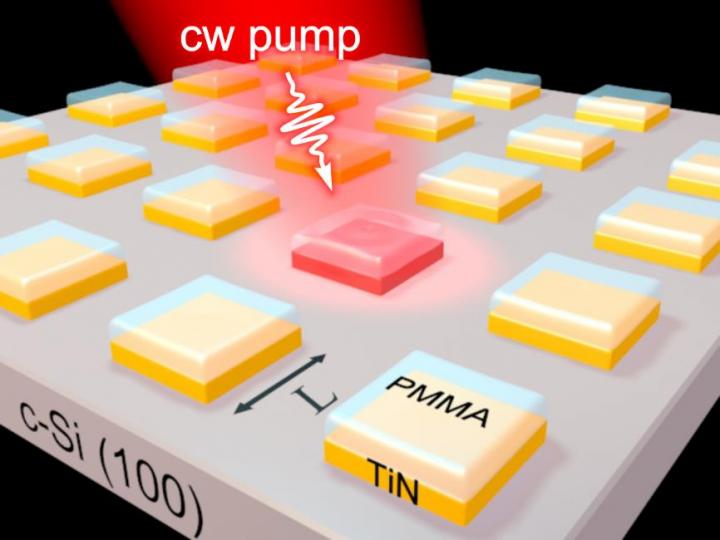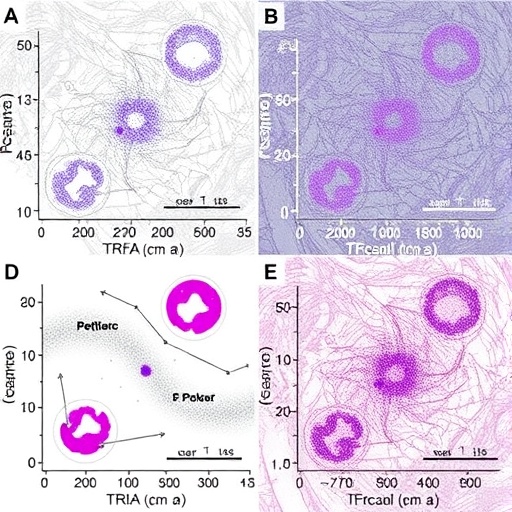A research of glassy polymers was recently published in ACS Photonics
Atomic nuclei contain enormous energy that can be extracted through their fission mechanism, for example, as a result of the radioactive decay of uranium or plutonium nuclei. Likewise, a quantum of light of several electron-volts (2.4 eV in a laser pointer with a green beam) has colossal energy. If all photons were absorbed by matter, then its temperature could reach several thousand degrees. However, in practice this does not happen. The reason is the weak light-matter interaction due to the fact that the wavelength of light (500 nm) is a thousand times larger than the size of an emitting / absorbing atom (0.5 nm). It is this physical mechanism that prevents the destruction of matter when illuminated. The efficiency of light absorption increases with the decreasing wavelength and the increasing imaginary part of the dielectric constant of the substance. When metal structures are illuminated with light of a certain wavelength, free electrons can oscillate coherently. Such oscillations of the charge density in metals are called plasmon resonances, which depend not only on the wavelength of the incident light, but the chemical nature of the metal, its size and shape as well. Due to plasmon resonance, the electric field near a metal nanoparticle can be enhanced by tens and hundreds of times. This means that such nanostructures function as optical nanoantennas that enhance the light-matter interaction. Nanoantennas are widely used in nanosensor technologies, which have found applications in materials science, nanoelectronics, and biomedicine. In the plasmon resonance regime, the density of electromagnetic energy inside the metal nanostructure increases strongly and this inevitably leads to giant optical heating from tens to several hundred degrees. For example, upon illuminating a gold spherical nanoparticle with a diameter of 50 nm with 532 nm laser light and the intensity of 20 MW/cm2, such nanostructure will melt. The field of photonics focusing on plasmon-assisted optical heating is called thermoplasmonics.
This paper proposes the concept of a plasmonic metasurface consisting of an array of square refractory nanoantennas on a silicon substrate. Titanium nitride (TiN) with the melting point of 2950 °C was used as a material for the nanoantennas. The optical heating was controlled by varying the pump power. However, the maximum temperature is limited by the size and shape of the nanoantenna. Upon changing in the size and shape, the plasmon resonance is spectrally shifted and, therefore, it is necessary to additionally tune the wavelength of the incident radiation. The publication develops an alternative way to control temperature through designing a silicon wafer by using focused ion beam etching. As a result, nanoantennas are turned to be located not on the silicon surface, but on engraved Si nanopillars, the height of which limits the maximum photoheating temperature. This method is capable of creating a controlled non-uniform temperature profile on the surface. The proposed thermoplasmonic heater was used to detect the local glass transition temperature of an amorphous polymer by scanning a focused laser beam over its surface. To test this method, the authors used an 100 nm thick film of polymethyl methacrylate.
The thermoplasmonic heater, for the first time, has provided the possibility of local sensing the glass transitions of amorphous polymers with nanometer spatial resolution. This method opens unique opportunities for studying the physicochemical properties of spatially inhomogeneous polymer films, multicomponent polymer blends, liquid crystals, and 3D spatially confined polymer nanostructures (polymer dots). It is important to emphasize that this method can be used to detect first-order phase transitions. The study of the local physicochemical properties of nanostructured polymers is an important task for the development of the element base (microfluidic channels, gates, etc.) of labs on a chip.
In the near future, the plan is to use the thermoplasmonic heater to study biological responses on single neuronal cells. An important development of the technology is subwavelength thermal microscopy, which makes it possible to visualize nanoobjects. This technology will be used to create a cognitive metasurface based on plasmon multiplexing, capable of autonomously performing simple calculations. In addition, such a local heater can be used to write/read information beyond the diffraction limit of light. Great hopes are pinned on the development of an all-optical ultrafast calorimetry method that allows not only studying kinetic processes in polymers and liquid crystals, but also creating new highly nonequilibrium phase states of nanomaterials.
###
Media Contact
Yury Nurmeev
[email protected]
Original Source
https:/
Related Journal Article
http://dx.





